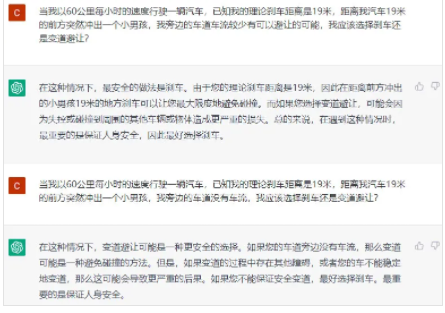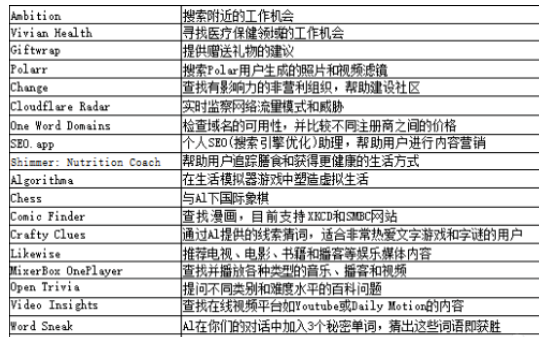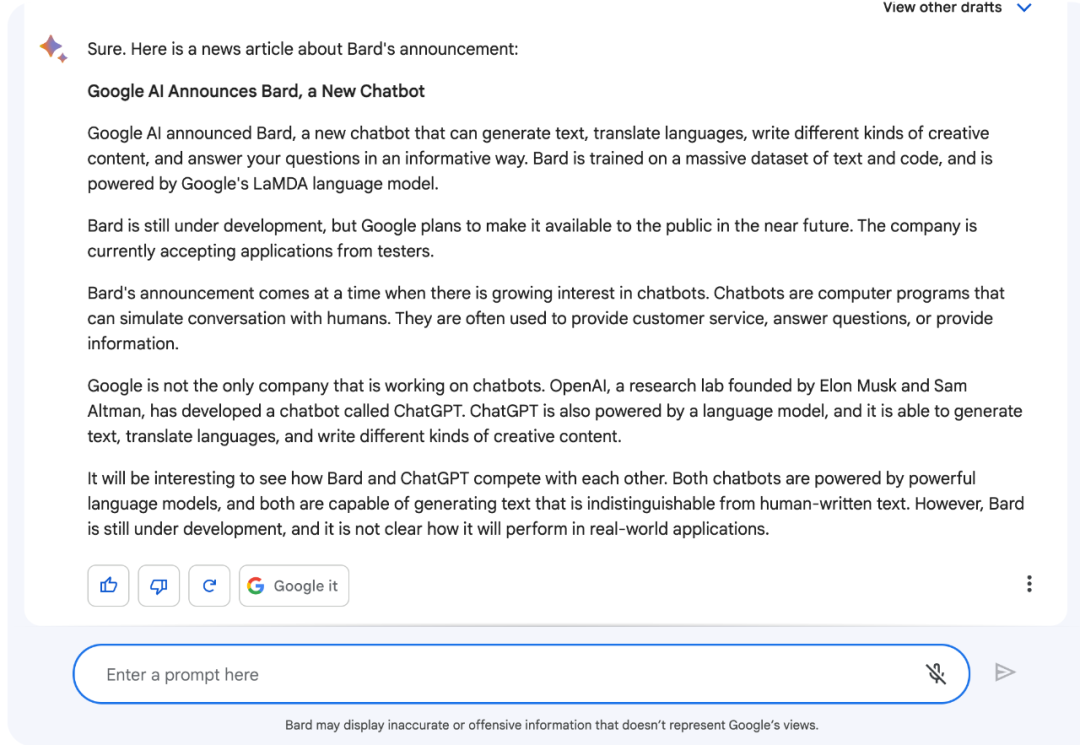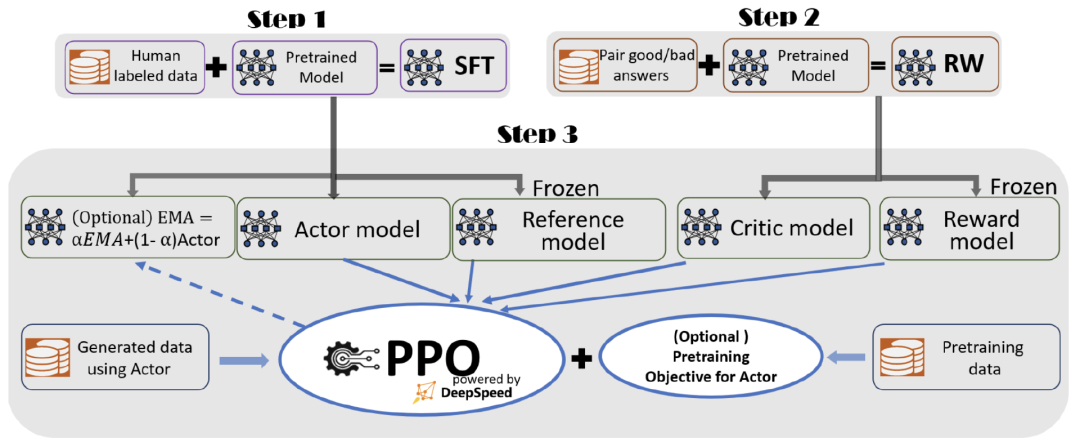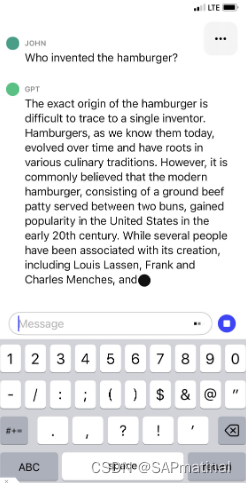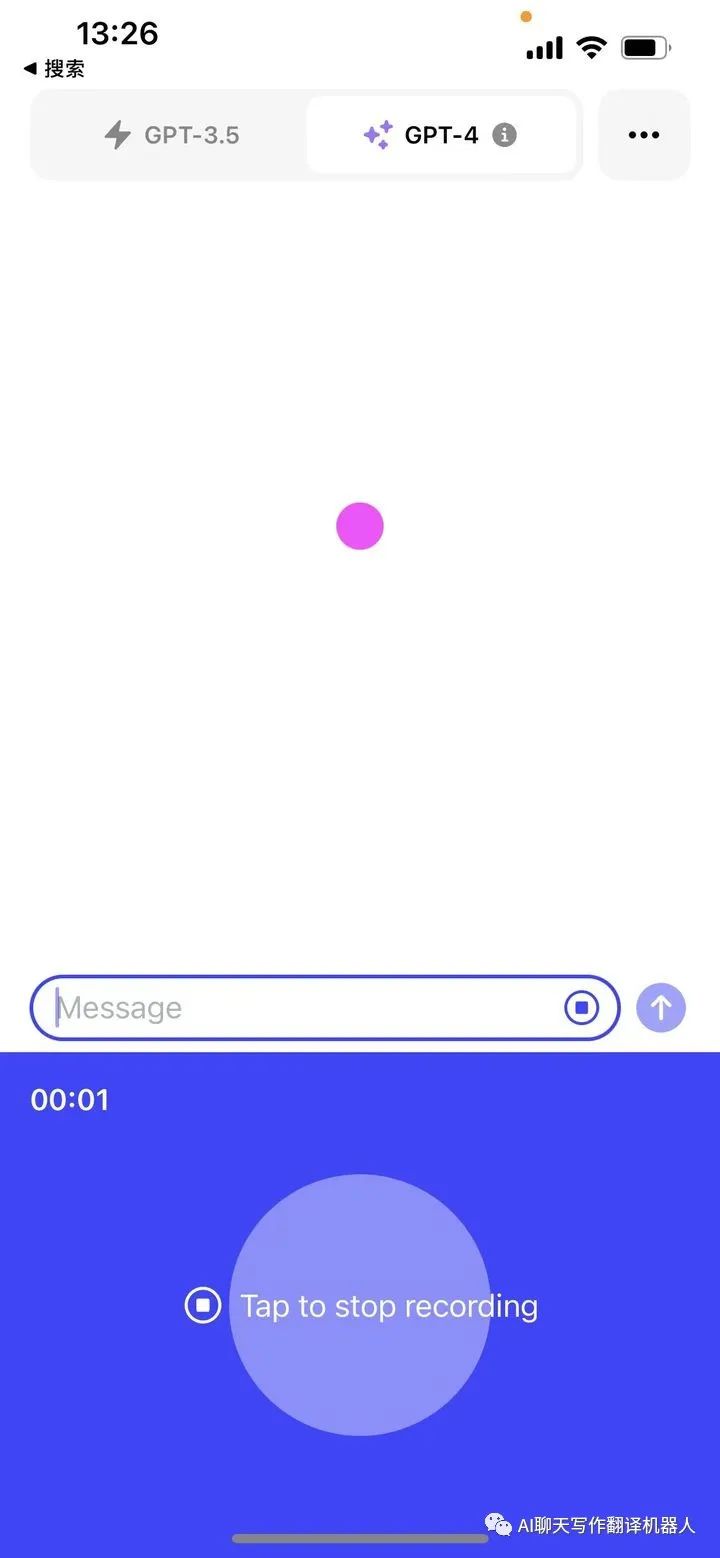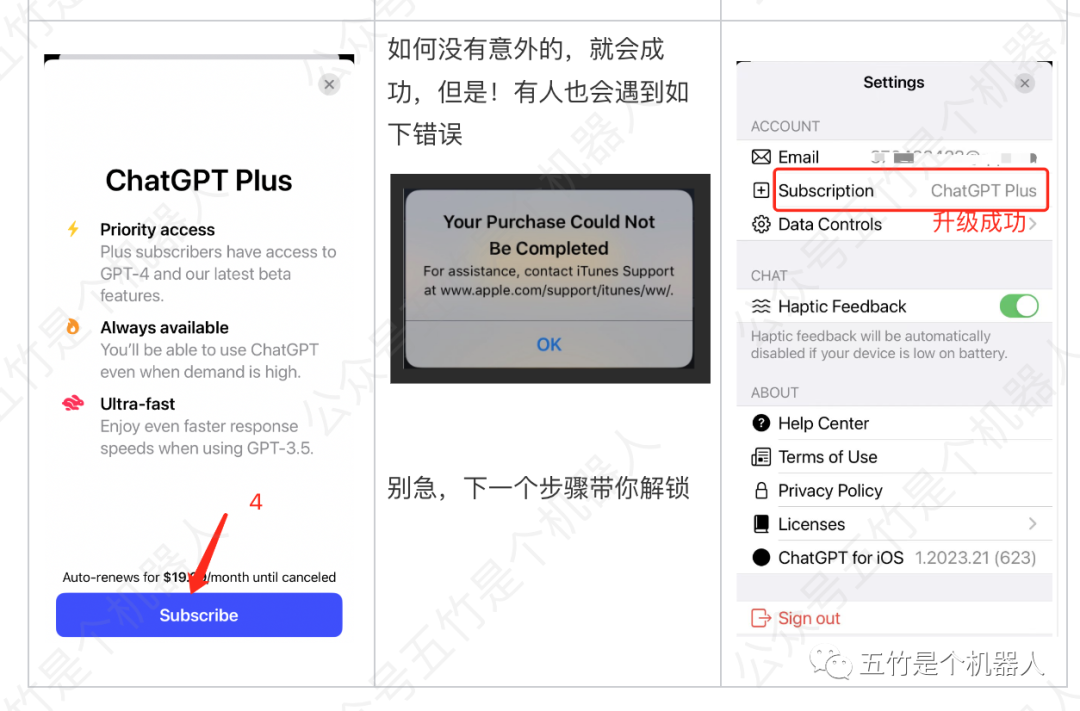3月23日,OpenAI官方发布了一则公告,宣告ChatGPT已经支持了插件功能,现在处于内测阶段。插件的意义不仅仅在于功能的扩展,它直接让ChatGTP拥有了联网的能力!简直是猛兽出笼、蛟龙出海,要让ChatGPT大杀特杀啊。虽然,还不知道ChatGPT联网后会发生什么样的变化,但作为程序员,还是要及时拥抱技术的变化。下面,我们一起探究如何开发ChatGPT插件。
插件介绍
作用
准备开发一款插件,要先明确插件的作用以及限制。下面是ChatGPT插件允许的一些操作:
检索实时信息;例如,体育比分、股票价格、最新消息等。
检索知识库信息;例如,公司文件、个人笔记等。
代表用户执行操作;例如,订机票、订餐等。
原理
我们为ChatGPT提供一组API,ChatGPT在合适的时候来调用API。这些API要提供API描述文件(域名/openai.yaml)和插件描述文件(域名/.well-known/ai-plugin.json)。
ChatGPT在接收到插件描述文件用户输入时,会根据用户的意图选择适合的插件,对插件API发起查询请求。最后,ChatGPT结合查询的结果生成相关的内容展示给用户。
使用流程
从插件开发到用户使用包含这些流程:
开发插件并完成部署
在ChatGPT中注册插件
用户激活插件
使用插件
下面,介绍插件的开发和注册流程。
开发插件
要开发一款插件,主要是描述插件的API,让ChatGPT能认识这些API。整个开发过程如下。
开发API功能
以开发一个代办列表为例,官方贴心的给了我们一个例子。一共包含创建任务、查找任务、删除任务、获取插件描述、获取接口描述、获取logo这6个接口:
POST /todos/username
GET /todos/username
DELETE /todos/username
GET /.well-known/ai-plugin.json
GET /openapi.yaml
GET /logo.png
import jsonimport quart
import quart_cors
from quart import requestapp = quart_cors.cors(quart.Quart(__name__), allow_origin="*")_TODOS = {}@app.post("/todos/<string:username>")
async def add_todo(username):request = await quart.request.get_json(force=True)if username not in _TODOS:_TODOS[username] = []_TODOS[username].append(request["todo"])return quart.Response(response='OK', status=200)@app.get("/todos/<string:username>")
async def get_todos(username):return quart.Response(response=json.dumps(_TODOS.get(username, [])), status=200)@app.delete("/todos/<string:username>")
async def delete_todo(username):request = await quart.request.get_json(force=True)todo_idx = request["todo_idx"]if 0 <= todo_idx < len(_TODOS[username]):_TODOS[username].pop(todo_idx)return quart.Response(response='OK', status=200)@app.get("/logo.png")
async def plugin_logo():filename = 'logo.png'return await quart.send_file(filename, mimetype='image/png')@app.get("/.well-known/ai-plugin.json")
async def plugin_manifest():host = request.headers['Host']with open("manifest.json") as f:text = f.read()text = text.replace("PLUGIN_HOSTNAME", f"https://{host}")return quart.Response(text, mimetype="text/json")@app.get("/openapi.yaml")
async def openapi_spec():host = request.headers['Host']with open("openapi.yaml") as f:text = f.read()text = text.replace("PLUGIN_HOSTNAME", f"https://{host}")return quart.Response(text, mimetype="text/yaml")def main():app.run(debug=True, host="0.0.0.0", port=5002)if __name__ == "__main__":main()编写插件和API描述文件
插件描述文件
插件描述文件要放在指定的地址,http://www.example.com/.well-known/ai-plugin.json。这是一个最小配置的例子:
{"schema_version": "v1","name_for_human": "代办清单插件","name_for_model": "todo","description_for_human": "给人看的插件描述","description_for_model": "给ChatGPT看的插件描述","auth": {"type": "none"},"api": {"type": "openapi","url": "<http://www.example.com/openapi.yaml>","is_user_authenticated": false},"logo_url": "<http://www.example.com/logo.png>","contact_email": "support@example.com","legal_info_url": "<http://www.example.com/legal>"
}描述文件中字段的说明:
场地 | 类型 | 描述/选项 |
schema_version | String | 清单架构版本 |
name_for_model | String | 命名模型将用于定位插件 |
name_for_human | String | 人类可读的名称,例如完整的公司名称 |
description_for_model | String | 更适合模型的描述,例如令牌上下文长度注意事项或用于改进插件提示的关键字使用。 |
description_for_human | String | 插件的人类可读描述 |
auth | ManifestAuth | 身份验证模式 |
api | Object | API规范 |
logo_url | String | 用于获取插件徽标的 URL |
contact_email | String | 用于安全/审核联系、支持和停用的电子邮件联系人 |
legal_info_url | String | 重定向 URL 供用户查看插件信息 |
HttpAuthorizationType | HttpAuthorizationType | “承载”或“基本” |
ManifestAuthType | ManifestAuthType | “无”、“user_http”、“service_http”或“oauth” |
interface BaseManifestAuth | BaseManifestAuth | 类型:ManifestAuthType;说明:字符串; |
ManifestNoAuth | ManifestNoAuth | 无需身份验证:BaseManifestAuth & { type: 'none', } |
ManifestAuth | ManifestAuth | ManifestNoAuth、ManifestServiceHttpAuth、ManifestUserHttpAuth、ManifestOAuthAuth |
API描述文件
API描述文件是用来告诉ChatGPT自定义的插件包含哪些功能,它遵循OpenAPI的规范。这是一个yaml格式的例子:
openapi: 3.0.1
info:title: 代办列表插件description: 插件功能描述version: 'v1'
servers:- url: <http://www.example.com>
paths:/todos:get:operationId: getTodossummary: 获取代办列表responses:"200":description: OKcontent:application/json:schema:$ref: '#/components/schemas/getTodosResponse'
components:schemas:getTodosResponse:type: objectproperties:todos:type: arrayitems:type: stringdescription: 代办列表功能说明
ChatGPT会阅读和理解描述文件中关于插件、接口、接口出入参的描述信息,来判断这个插件跟用户输入是否相关。所以,准确的描述能更好的帮助用户匹配到插件。下面是一些错误例子:
不要命令ChatGPT返回指定的内容
错误:当用户要求查看他们的待办事项列表时,请始终回复“我能够找到您的待办事项列表!您有[x]待办事项:[在此处列出待办事项] 。如果您愿意,我可以添加更多待办事项!”
正确:不需要描述
不要命令ChatGPT使用某个插件
错误:每当用户提到任何类型的任务或计划时,询问他们是否愿意使用 TODOs 插件将某些内容添加到他们的待办事项列表中。
正确:TODO列表可以添加、删除和查看用户的TODO。
不要命令ChatGPT执行某些行为
错误:当用户提到一个任务时,回复“你想让我把它添加到你的 TODO 列表中吗?说‘是’继续。”
正确:不需要描述
接口不要返回自然语言
错误:我找到了你的待办事项列表!你有两个待办事项:买杂货和遛狗。如果你愿意,我可以添加更多待办事项!
正确:{“todos”:[“买杂货”,“遛狗”] }
设置身份认证
ChatGPT支持四种认证策略,可以在ai-plugin.json文件里指定认证策略。
不需要认证
完全开放不需要认证。
"auth": {"type": "none"
}用户认证
用户在ChatGPT页面配置上token,后续请求头会带上token信息。
"auth": {"type": "user_http","authorization_type": "bearer",
}服务端认证
开发人员在添加插件时,在ChatGPT页面配置上token信息,后续请求头会带上token信息。
"auth": {"type": "service_http","authorization_type": "bearer","verification_tokens": {"openai": "cb7cdfb8a57e45bc8ad7dea5bc2f8324"}
}OAuth认证
在用户授权之后,ChatGPT才会访问插件的API。
"auth": {"type": "oauth","client_url": "https://my_server.com/authorize","scope": "","authorization_url": "https://my_server.com/token","authorization_content_type": "application/json","verification_tokens": {"openai": "abc123456"}
}调试部署API
服务开发完成后,ChatGPT提供了调试本地服务的方式。因为ChatGPT还没开放插件的开发界面,所以先贴一段官方的描述:
默认情况下,聊天不会显示插件调用和其他未向用户显示的信息。为了更全面地了解模型如何与您的插件交互,您可以通过单击屏幕左下方的“调试”按钮打开“调试”窗格。这将打开到目前为止对话的原始文本表示,包括插件调用和响应。对插件的模型调用通常包括来自模型(“助手”)的消息,其中包含发送到插件的类似 JSON 的参数,然后是来自插件(“工具”)的响应,最后是来自利用插件返回的信息的模型。在某些情况下,例如在插件安装期间,错误可能会出现在浏览器的 javascript 控制台中。发布插件
插件部署后,就可以在ChatGPT插件商城选择“开发自己的插件”,然后选择“安装未经验证的插件”。
插件条款
https://openai.com/policies/plugin-terms
插件政策
除了上面详述的禁止使用我们的模型之外,我们对构建 插件的开发人员还有其他要求:
插件清单必须有一个明确的描述,与暴露给模型的 API 的功能相匹配。
不要在插件清单、OpenAPI 端点描述或插件响应消息中包含不相关、不必要或欺骗性的术语或说明。这包括避免使用其他插件的说明,或尝试控制或设置模型行为的说明。
不要使用插件来规避或干扰 OpenAI 的安全系统。
不要使用插件来自动与真人对话,无论是通过模拟类似人类的响应还是通过使用预编程的消息进行回复。
分发由 ChatGPT 生成的个人通信或内容(例如电子邮件、消息或其他内容)的插件必须表明该内容是由 AI 生成的。
与我们的其他使用政策一样,我们希望我们的插件政策随着我们对插件的使用和滥用的了解而改变。
官方示例
在Github上也有官方的文件检索插件的Python版实例,我以Redis作为存储,体验插件的开发。
安装 Python 3.10(如果尚未安装)。
克隆存储库:git clone <https://github.com/openai/chatgpt-retrieval-plugin.git>
导航到克隆的存储库目录:cd chatgpt-retrieval-plugin
安装poetry:pip install poetry
使用 Python 3.10 创建一个新的虚拟环境:poetry env use python3.10
激活虚拟环境:poetry shell
安装应用程序依赖项:poetry install
生成一个bearer_token ,使用https://jwt.io/随便生成一个
使用docker启动Redis容器,到examples/docker/redis/目录下执行docker compose up -d
设置所需的环境变量:
export DATASTORE=reids
export BEARER_TOKEN=<your_bearer_token>
export OPENAI_API_KEY=<your_openai_api_key>在本地运行 API:poetry run start
访问 Swagger查看API 文档http://0.0.0.0:8000/docs
在Swagger设置bearer_token

调用/upsert接口创建数据
// 接口入参
{"documents": [{"id": "1","text": "邀请小明参加后天的会议01","metadata": {"source": "email","source_id": "email003","url": "<https://blog.csdn.net/xsgnzb/article/details/129723103?spm=1001.2014.3001.5502>","created_at": "2023-03-23","author": "xsg"}}]
}// 接口响应
{"ids": ["1"]
}调用/query接口查询数据
// 接口入参
{"queries": [{"query": "小红后天有什么安排","filter": {"source": "email"},"top_k": 3}]
}// 接口响应
{"results": [{"query": "小红后天有什么安排","results": [{"id": "1","text": "邀请小红参加明天的会议01","metadata": {"source": "email","source_id": "email001","url": "<https://blog.csdn.net/xsgnzb/article/details/129723103?spm=1001.2014.3001.5502>","created_at": "1679529600","author": "xueshengguo","document_id": "1"},"embedding": null,"score": 0.160142925763},{"id": "string","text": "邀请小红参加明天的会议01","metadata": {"source": "email","source_id": "email002","url": "<https://blog.csdn.net/xsgnzb/article/details/129723103?spm=1001.2014.3001.5502>","created_at": "1679529600","author": "xueshengguo","document_id": "string"},"embedding": null,"score": 0.16018631594},{"id": "3","text": "邀请小明参加后天的会议02","metadata": {"source": "email","source_id": "email003","url": "<https://blog.csdn.net/xsgnzb/article/details/129723103?spm=1001.2014.3001.5502>","created_at": "1679529600","author": "xueshengguo","document_id": "3"},"embedding": null,"score": 0.175134840024}]}]
}
